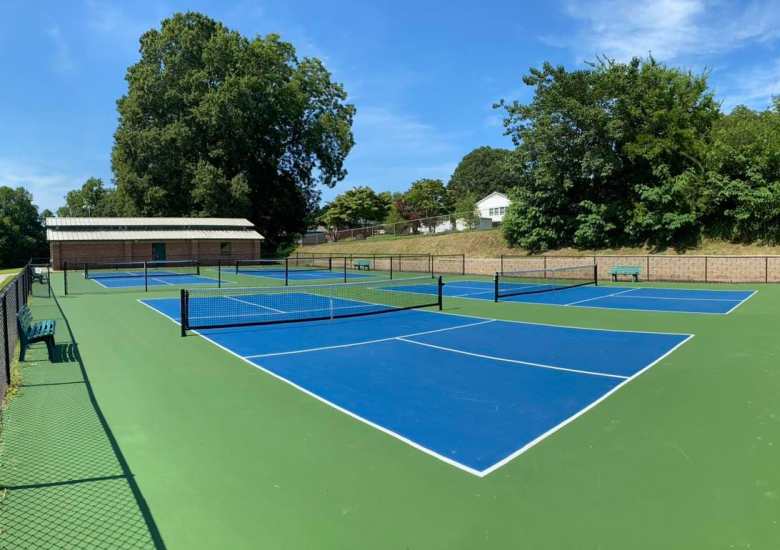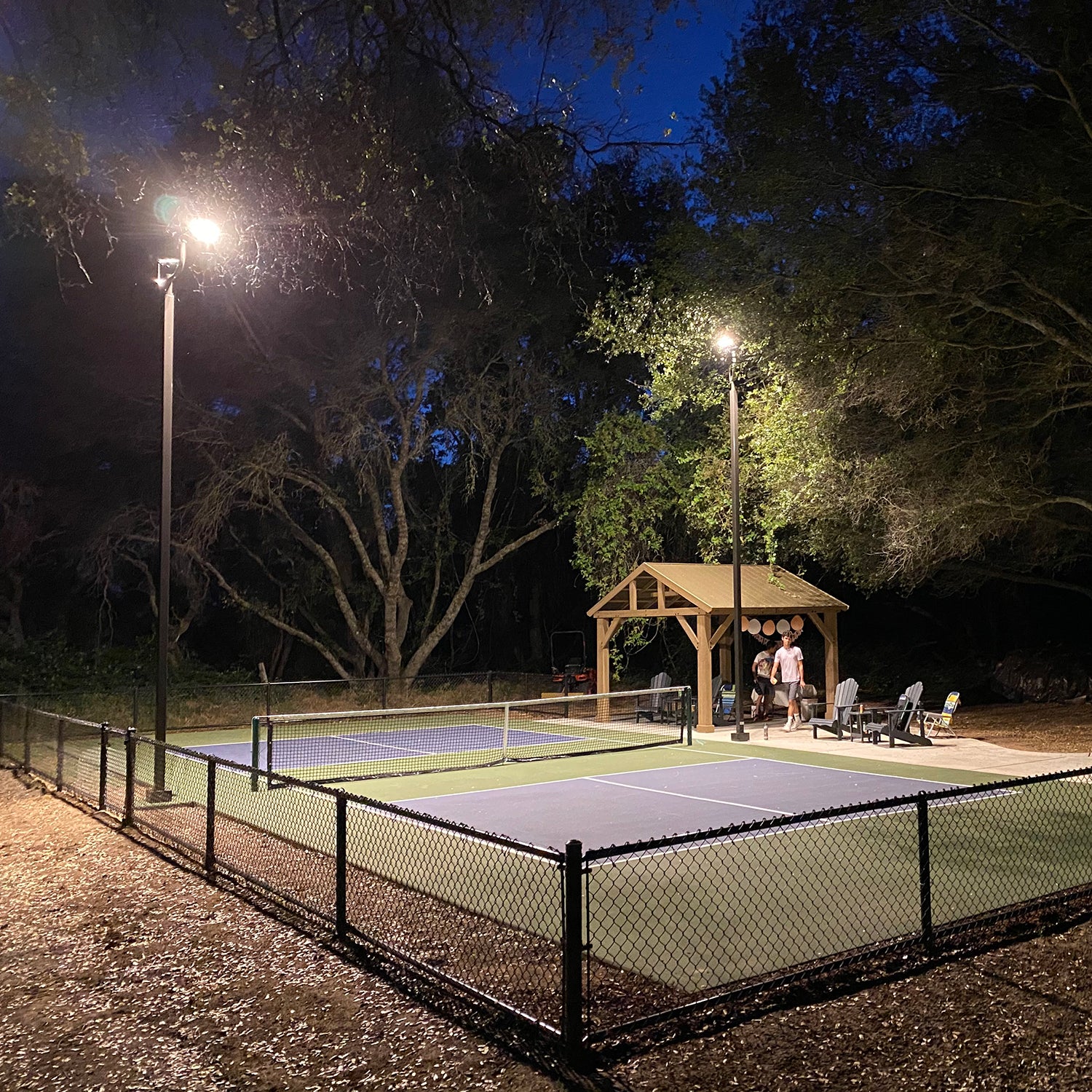Increase Resident Engagement With Community-Driven Pickleball Court Projects
The development of community-driven pickleball court tasks provides an one-of-a-kind chance to foster local interaction and strengthen neighborhood ties. By actively involving homeowners in the planning and implementation phases, such efforts not just develop leisure rooms however additionally promote a shared sense of possession. Understanding the steps to launch these projects, consisting of efficient stakeholder involvement and resource allowance, is crucial. The actual question remains: exactly how can these grassroots initiatives be strategically executed to make sure sustainability and inclusivity in varied communities? Checking out successful case research studies might give the insights needed to address this essential problem.
Value of Area Involvement
Neighborhood interaction is a crucial element in the successful development of pickleball court tasks, as it promotes a sense of ownership and collective responsibility amongst residents. When neighborhood members are actively associated with the preparation and application phases, they are extra most likely to promote for the job's long-lasting success. Engaging stakeholders such as neighborhood players, households, and recreational teams makes certain that the centers meet the diverse requirements and preferences of the area.
In addition, neighborhood involvement grows a helpful environment where homeowners really feel empowered to contribute their ideas and sources. Pickleball court construction. This joint method can bring about cutting-edge services that enhance the layout and performance of the courts, making them more appealing to a wider target market. Additionally, entailing locals in decision-making procedures can reinforce social ties, advertising inclusivity and unity within the community
The presence of community support for a pickleball project can additionally play an essential role in protecting funding and authorization from neighborhood authorities. By demonstrating a common commitment to leisure development, areas can successfully advocate for sources and plan modifications that prefer the establishment of pickleball courts, ultimately enhancing the neighborhood culture and leisure landscape.
Actions to Start a Project
Starting a pickleball court task requires an organized approach that improves the foundation of neighborhood involvement developed in previous discussions. The very first step is to assemble a project committee consisting of neighborhood stakeholders, enthusiasts, and reps from relevant organizations. This varied team ensures that several viewpoints are thought about.
Following, perform a needs assessment within the community. Surveys, emphasis teams, and public conferences can be effective in evaluating rate of interest and gathering input on prospective court areas, wanted amenities, and scheduling preferences. Following this, establish a task strategy laying out objectives, timelines, and responsibilities.
As soon as the strategy remains in area, engage with local authorities to understand zoning regulations and any required authorizations. Communicating transparently with the community throughout this procedure is important, as it promotes count on and motivates additional involvement.
Furthermore, organizing community occasions can help preserve momentum and excitement. These occasions can function as platforms for further discussion and help to strengthen area connections. Finally, record every step taken and maintain detailed documents, as this will be advantageous for future phases of the job, including financing and source acquisition.
Funding and Resources Available
Safeguarding funding and resources for a pickleball court task is commonly an important step that can establish the job's usefulness and success. Various avenues exist for obtaining monetary support, varying from public funding to exclusive sponsorships. Regional federal government grants, often intended at promoting community health and wellness and recreation, can supply substantial monetary support for such efforts.
In enhancement to government sources, not-for-profit organizations and foundations often offer grants especially for sports and neighborhood development jobs. Involving local organizations as sponsors can likewise be a fruitful approach; many business are anxious to spend in community initiatives that improve their company social responsibility profile.
Crowdfunding platforms have actually emerged as a practical choice for grassroots fundraising, allowing neighborhood participants to add directly to the project. This method not only raises funds however likewise fosters a sense of ownership among participants.
Design and Planning Considerations
Efficient style and preparation see post are essential parts of any kind of effective pickleball court task complying with the purchase of financing and sources. A complete analysis of the suggested place is vital; this includes evaluating access, closeness to existing area features, and the capacity for visibility and involvement.
The format of the court must follow main size specifications while taking into consideration the surrounding environment. Including functions such as seating, color frameworks, and suitable lights can significantly enhance gamer experience and spectator enjoyment. Products selected for the court surface area must prioritize durability and safety and security, with choices like acrylic or asphalt offering optimal performance.
Involving neighborhood members in the layout process cultivates a feeling of possession and guarantees that the center satisfies neighborhood requirements - Pickleball court construction. This can be attained through public assessments and surveys, permitting stakeholders to express their choices and worries
Sustainability ought to likewise be a priority; integrating environmentally friendly you could try here products and practices can add to lasting viability. Ultimately, creating an upkeep strategy to ensure the court stays in excellent condition will certainly support continuous neighborhood engagement and involvement in pickleball tasks.

Success Stories and Instance Research Studies
Highlighting the transformative effect of community-driven efforts, several success tales show how joint efforts have caused the advancement of vibrant pickleball courts throughout various areas. One noteworthy instance is the effort in a town in Florida, where residents affiliated to convert an underutilized tennis court into a devoted pickleball center. Through fundraising occasions and collaborations with regional businesses, the area increased enough funds to set up brand-new nets, resurfacing, and lines, eventually cultivating a dynamic hub for neighborhood players.
Likewise, in a suv area of The golden state, a grassroots motion arised to create pickleball courts in a regional park. The task not only involved volunteers for construction yet also included workshops to involve area members in the sport. Consequently, the courts ended up being a focal point for social communication and fitness, attracting players of any ages.
These study exemplify how community-driven jobs can improve neighborhood involvement, promote physical task, and reinforce social bonds. By leveraging cumulative resources and enthusiasm, neighborhoods can successfully develop and maintain pickleball facilities that serve diverse populaces and foster a sense of belonging.

Verdict
Finally, community-driven pickleball court projects function as vital tools for improving neighborhood interaction and cultivating a sense of belonging amongst citizens. By focusing on stakeholder involvement throughout the preparation and implementation stages, these campaigns can effectively resolve diverse neighborhood demands. Additionally, leveraging readily available resources and checking out effective instance studies can supply valuable insights for future jobs. Inevitably, such initiatives add to the change of public rooms right into dynamic centers of physical fitness and social interaction, reinforcing area ties.
The introduction of community-driven pickleball court tasks offers an unique opportunity to cultivate local engagement and strengthen community ties.Community engagement is an essential aspect in the successful development of pickleball court projects, as it fosters a sense of possession and collective obligation among citizens. When neighborhood members are actively involved in the preparation and implementation stages, they are more likely to support for the task's long-lasting success.Starting a pickleball court task requires an organized strategy that constructs on the foundation of community engagement established in previous discussions. The project not only engaged volunteers for building however also consisted of workshops to engage area participants in try these out the sport.
Comments on “Usual Mistakes to Avoid in Your Pickleball Court Construction Process”